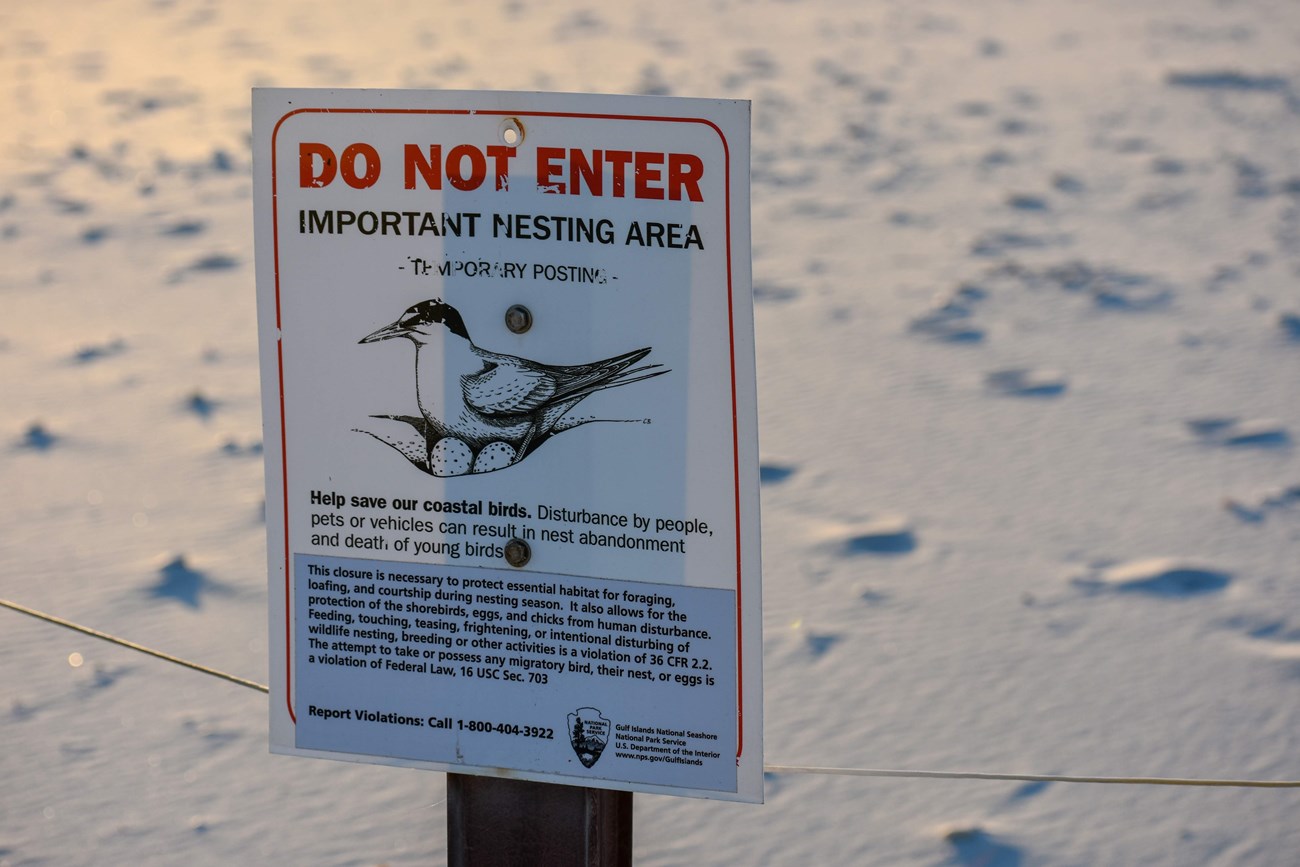
Photo by Doggrell The least terns you see at Gulf Islands migrate up from South America (typically Brazil) to breed. They also breed on the Atlantic Coast from Maine all the way down the south coast of Bermuda, the Caribbean and Venezuela. The Least Tern is the smallest of the terns at just 8 to 9 inches long. Their signature markers include a black “crown” on their head with a snowy white underside and forehead. When flying, least terns can be identified by their angular wings and pointed wingtips as well as a slightly forked tail. Their back and wings are a greyish color and have thin yellow bills and yellow legs during the breeding season. Least tern chicks have lighter, more sandy feathers and when they become juveniles have scaly looking legs and a small smudgy crown shaped patch on their head. Least terns come to the national seashore to nest in colonies and sometimes in isolated pairs. Courtship includes the presentation of food or food-like objects to a female and a variety of posture and vocalizations. Their diet varies with location but consists mostly of fish, crustaceans and insects. Terns typically hover over the water before plunging for their tiny prey. Nests are extremely hard to see, which least terns use as a defense mechanism. The shallow scrape on open ground is surrounded by pebbles, shell fragments and other debris allowing the nest to blend in with the rest of the beach. Least tern eggs are buff to pale green, blotched with black, brown and gray. The biggest threat to least terns is habitat loss. Development in nesting habitats threaten least tern procreation. The national seashore closes areas around nests because interference with the nest can cause adult birds to abandon their nests and leave eggs unprotected from predators. Natural predators of least terns include foxes, snakes, larger birds and ghost crabs. Development pushes new predators such as crows and coyotes closer to the nesting habitats of these birds. If you spot a shorebird nest, back out of the area, retracing your steps and let a national park ranger or volunteer know. Be sure to observe posted speed limits during March-September and watch for birds flying across the road or traveling along the roadway. Bicyclists, walkers, and joggers are encouraged to be aware of bird behaviors along the roadways near posted nesting areas. Remain outside of closure areas. 
NPS Photo |
Last updated: June 14, 2019
